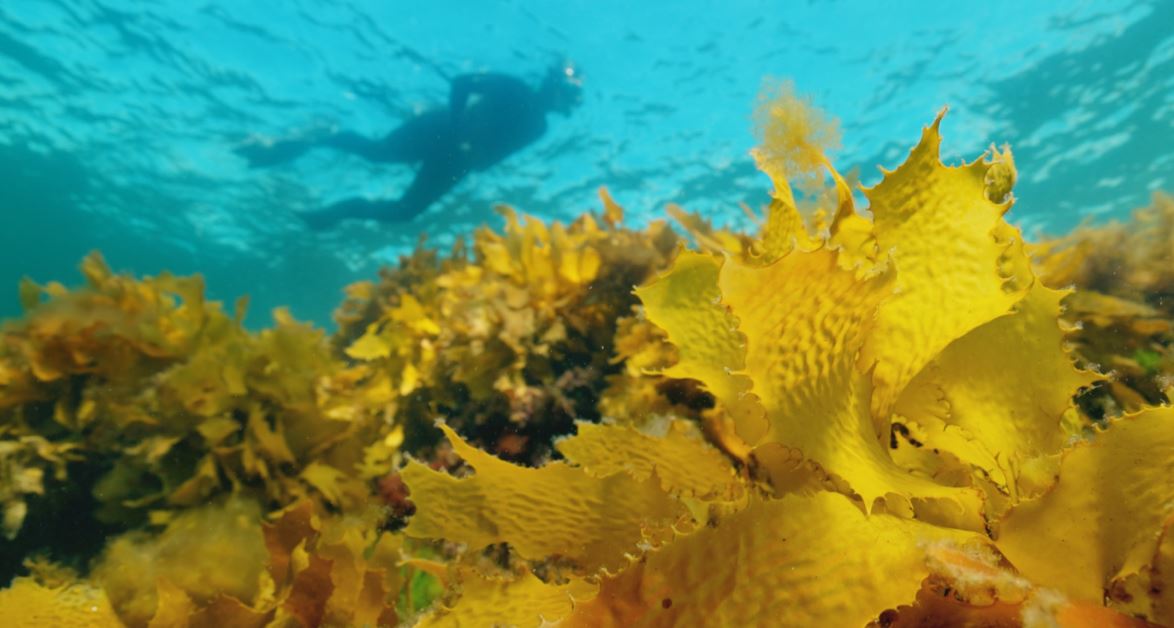Progress 2023-2024
Details on all activities, including annual activity updates can be found on CoastKit at mapshare.vic.gov.au/coastkit in the EMP theme.
Of the 355 activities currently listed in the Delivery Plan, 239 have been completed. Many of the activities listed in the Delivery Plan are funded by Coastcare and the Port Phillip Bay Fund community grants.

The activities completed to date have enhanced knowledge of the Port Phillip Bay environment, contributed to the implementation of policy and upgraded infrastructure. The figure below showcases some of the collective achievements of the EMP activities completed in 2017-2024.
![]()
The end of June 2024 has seen an estimated investment of $204,041,560 towards implementing the EMP activities. In addition, significant in-kind contributions have been made by the many organisations contributing to the ongoing health and resilience of the Bay. These in-kind contributions include over 1,072,000 volunteer hours, 1,139,628 staff hours, more than $4,719,000 cash and close to $11,000,000 of other in-kind contributions, such as equipment and transport.
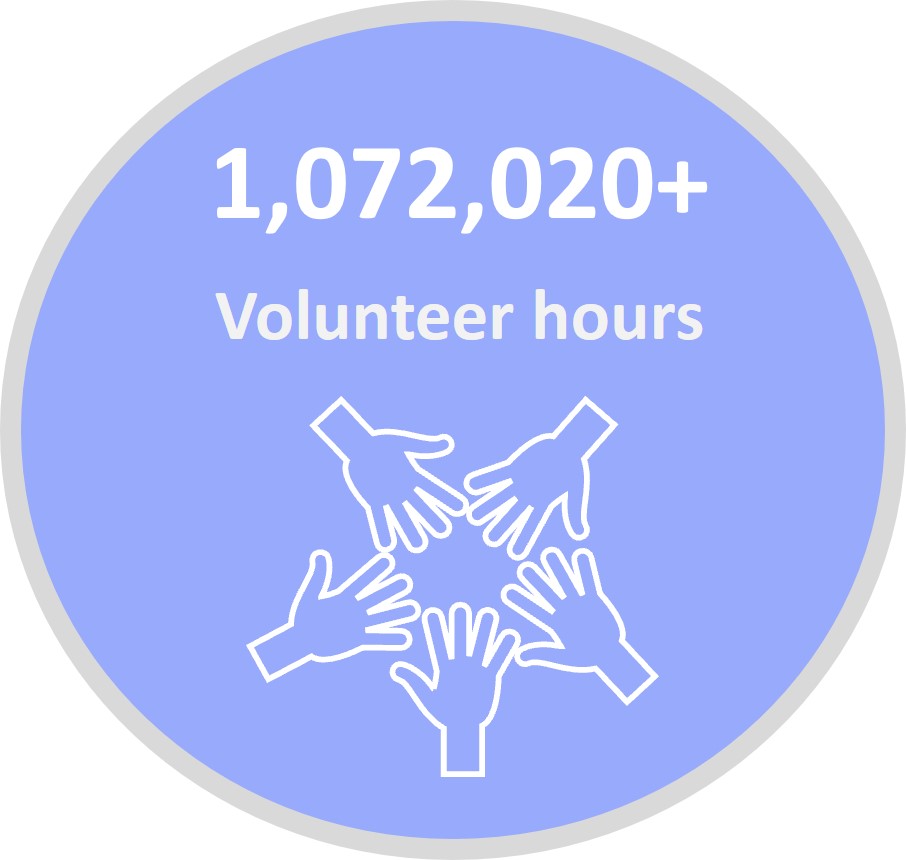
The chart below breaks down the value of the investment, volunteer time, in-kind cash and other in-kind contributions against each of the Environmental Management Plan’s 3 goals. Water Quality has significant estimated investment due to the Western Treatment Plant upgrades being completed by Melbourne Water.
The Delivery Plan outlines funded activities across government, industry, and the community, that align with the objectives and priorities of the EMP. These will be progressively achieved with new activities identified and added over the EMP’s 10-year implementation. New activities added in the 2024 revision of this Delivery Plan are shown in the map below.
The newly added activities include projects funded by Port Phillip Bay Fund and Coastcare Community Grants, and other relevant projects delivered and supported through other initiatives. Annual progress reports, reporting against actions and activities provide a measure of the EMP’s outputs, and the 5-yearly evaluation has measured the outcomes of actions and activities against Bay health indicators. This approach provides opportunities to respond to new information, resourcing and funding. It also provides regular measures of success against the EMP’s overarching vision.
Aggregated activity achievements to 30 June 2024 are provided in the Achievements section. For further details on all activities, including individual activity annual progress reports, please visit the 'Environmental Management Plan' theme on CoastKit at mapshare.vic.gov.au.
Case studies 2023-2024
The case studies provided by various organisations are activities listed in the 2024 Delivery plan.
Activity name: Wathaurong Building Capacity for Engagement in Seaweed Management on Country
Activity reference number: 1.3.002.AB
Strategic lead: Wathaurong Aboriginal Co-operative Ltd
Southwest Victorian coasts are populated by a plethora of seaweed species integral to Aboriginal oral histories for millennia. To help revitalise and share Traditional knowledge, Wathaurong Aboriginal Co-operative collaborated with Deakin University on running a variety of workshops with Aboriginal youth, funded by the 2023 Port Philip Bay Fund. The work built on a past pilot project, which received funding from the 2021-2022 Port Phillip Bay Fund.
 Photo credit: Zoe Brittain
Photo credit: Zoe Brittain
The project aimed to preserve Traditional knowledge within and beyond Wathaurong communities and build the capacity of Aboriginal community members to contribute to the management of indigenous seaweeds. Through the collaboration of Elders, an Aboriginal research assistant, art professionals and Deakin University staff, students and alumni, scientific and Cultural knowledge were combined to offer engaging workshops for young participants aged 5-17 years.
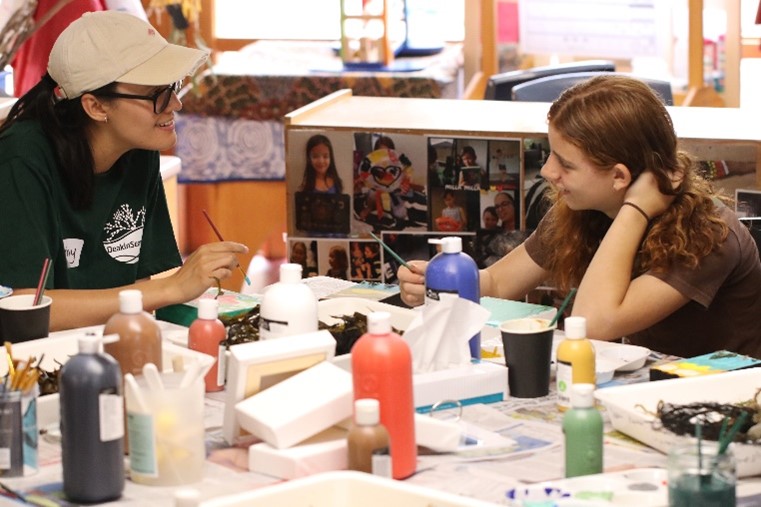
Photo credit: Gareth Colliton
Activities entailed a youth-focused workshop, a hands-on laboratory-based session and a scientist meet-and-greet. Over the events, 65 participants created a series of artworks in a variety of media, incorporating seaweed. Works were presented in a public exhibition at Deakin Waterfront for Reconciliation Week and compiled into a book.
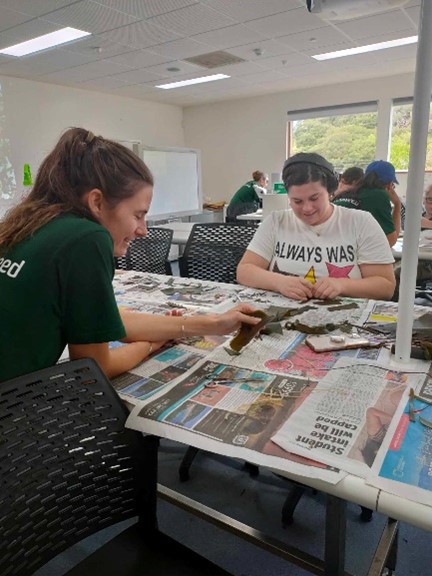 Photo credit: Zoe Brittain
Photo credit: Zoe Brittain
For many Aboriginal participants, it was their first time engaging with local Aboriginal services or community groups. One such participant described their experience as "[a] very safe space, safer than I felt at school". The continued collaboration efforts on this project have contributed to preserving Traditional Knowledge and sharing it within the Aboriginal Communities and to non-Aboriginal allies. After multiple sold-out events, the project's success will be felt ongoing and wrapped up in June 2025.
Activity name: Investigating chemical contaminants in stormwater for a healthier bay
Activity reference number: 3.2.004.AC
Strategic lead: Monash University
Nitrogen is an essential nutrient for all living organisms, supporting ecosystem function. Excess nitrogen however can have negative effects, particularly when it enters bodies of water, as it can trigger environmental problems like algal blooms. Excess nitrogen can originate from various sources and can be interlinked with organic contaminant, such as pharmaceutical and personal product waste as well as fertilisers. These pollutants can further impair ecosystem functioning by decreasing biodiversity and species composition. Port Phillip Bay is prone to the effects of excess nitrogen and organic contaminants as they can be introduced through stormwater outlets that enter the Bay.
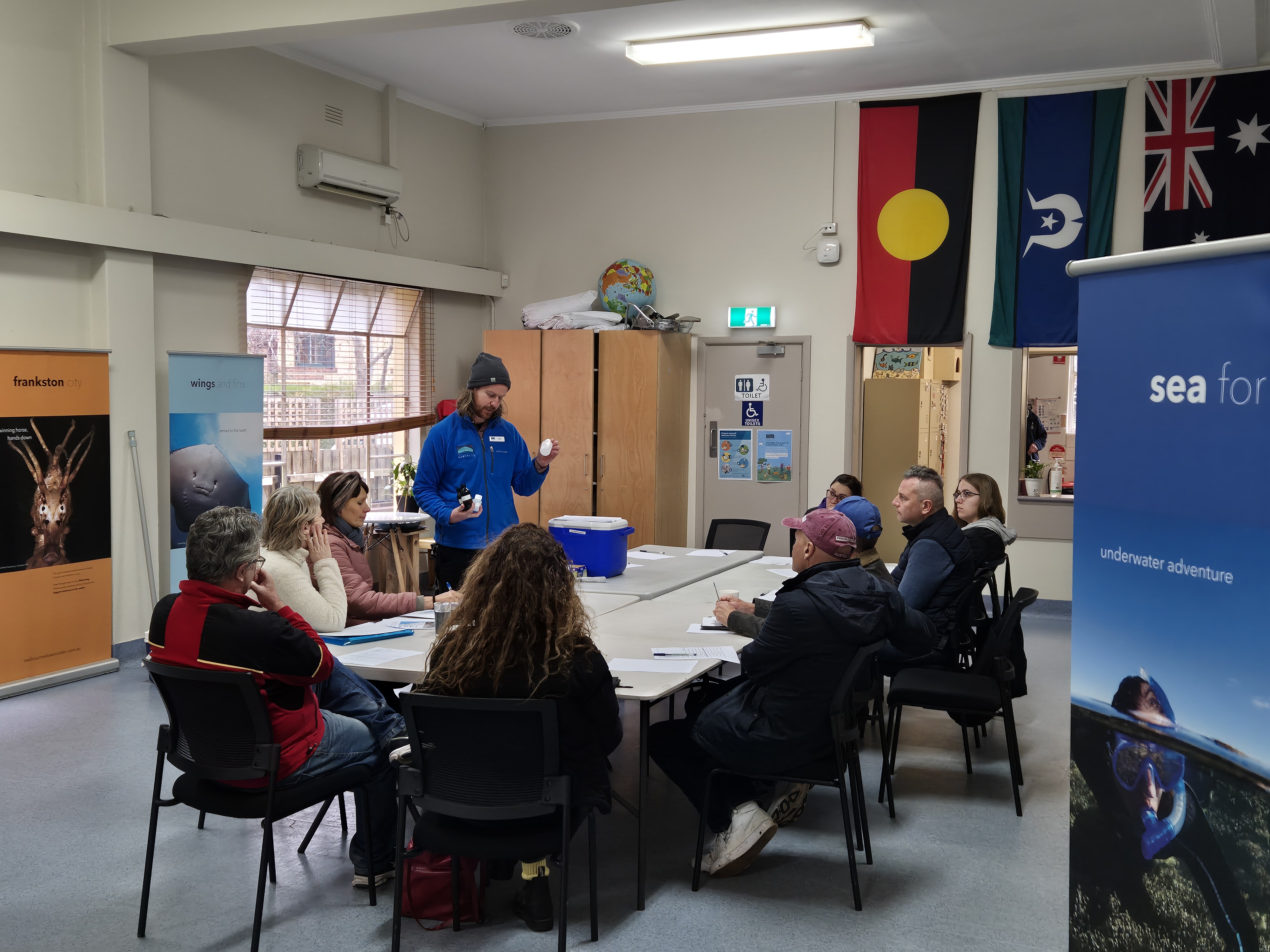
Photo credit: Tyler King (Port Phillip EcoCentre)
With the support of the 2023 Port Phillip Bay Fund, Monash University aims to research the sources and impact of nitrogen entering the Bay whilst engaging the local community in collecting data and monitoring key stormwater outlets. The project received $99,619 to produce sufficient data to inform an approach for managing excess nitrogen in the Bay.
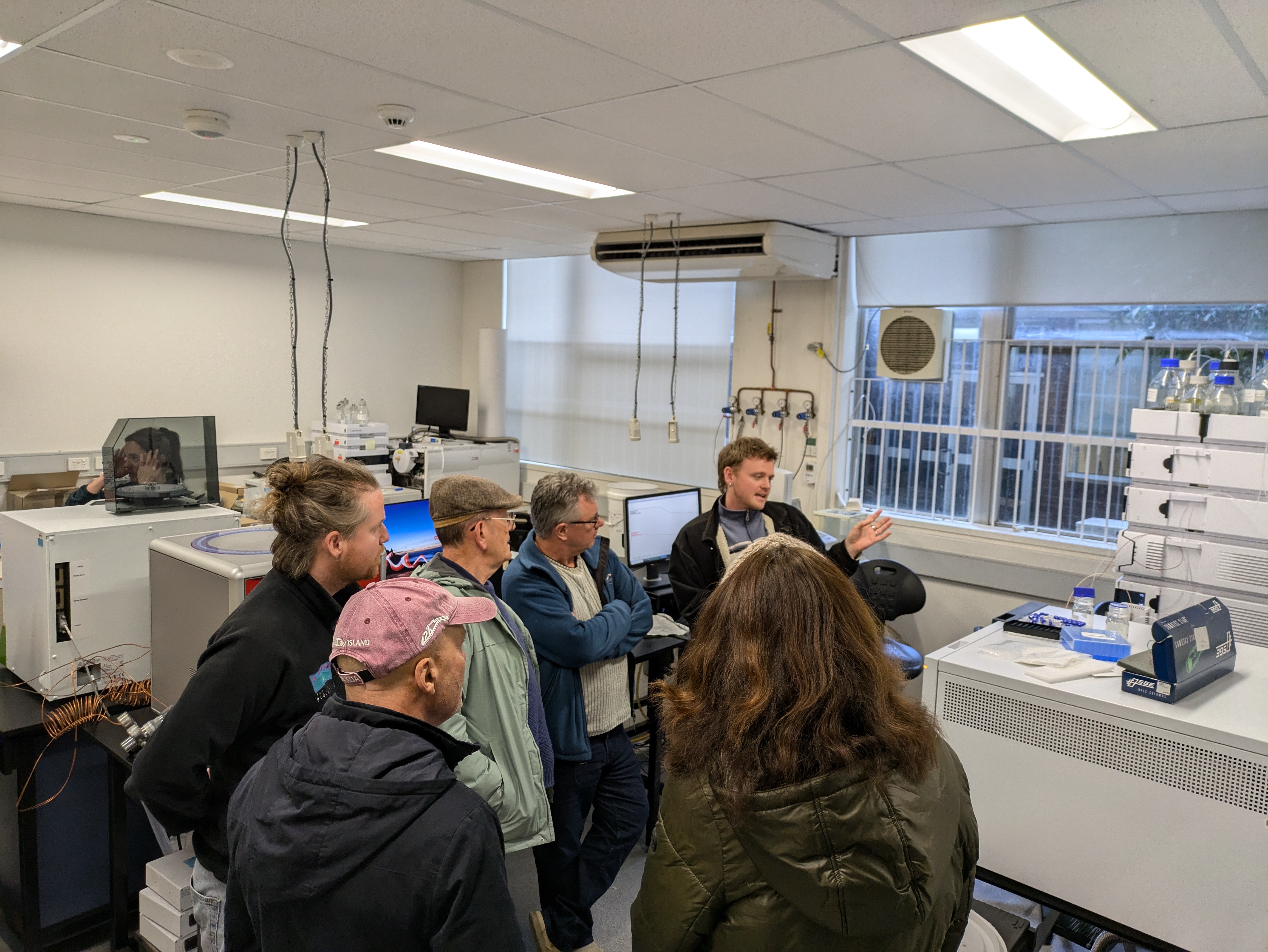
Photo credit: Tyler King (Port Phillip EcoCentre)
So far, the project has been successful in identifying all stormwater outlets with the support of various Water Corporations and Councils. Volunteer citizen scientists have been recruited with the help of community organisations, not-for-profit organisations and friends of groups. Two rounds of bay-wide surveys are complete with 100+ samples being collected out of the 300 planned by the end of the project.
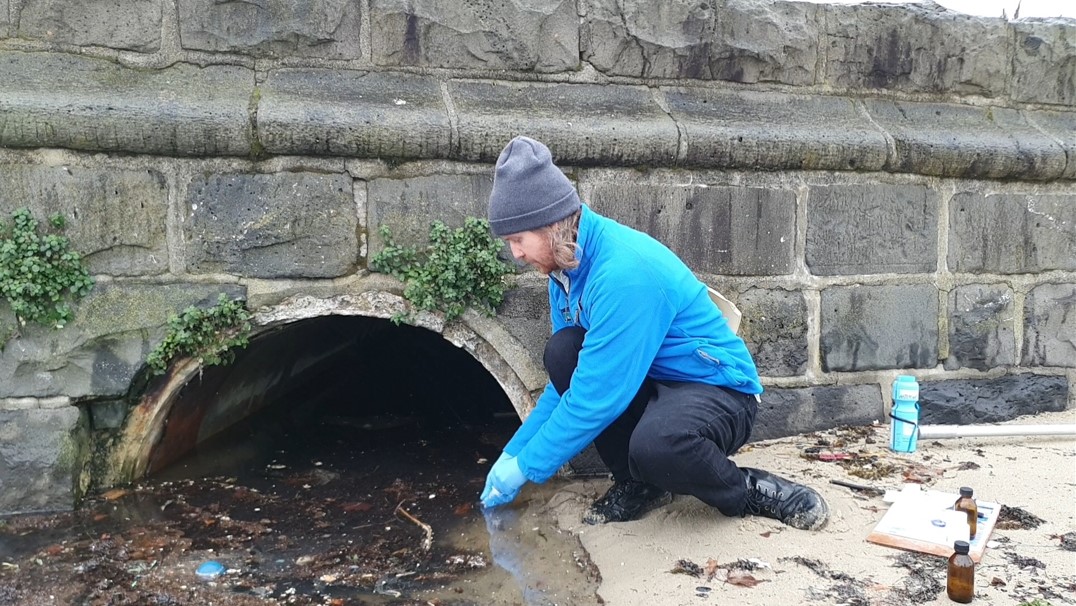
Photo credit: Tyler King (Port Phillip EcoCentre)
As more samples are collected, nitrogen and organic contaminant levels will be assessed and compared. The resulting data will then inform an analysis of how different land-uses and weather patterns affect contaminant levels and so provide direction towards future management approaches. Projects that combine academic research and community-involved citizen science are critical in collecting long-term monitoring data whilst enhancing stewardship of the Bay.
Activity name: Kelping the Bay: future proofing the Golden Kelp
Activity reference number: 6.3.002.AP
Strategic lead: Deakin University
The "Kelping the Bay" initiative is a groundbreaking conservation project that created Victoria's first biobank for Golden Kelp (Ecklonia radiata), a vital species that forms the backbone of Australia's Great Southern Reef ecosystem. Supported by the Port Phillip Bay Fund, this project addressed the alarming decline of kelp forests in Port Phillip Bay, where these underwater forests have dramatically reduced over the past twenty years due to Purple Sea Urchin (Heliocidaris erthrogramma) overgrazing and declining water quality.
Photo credit: Stefan Andrews (Great Southern Reef Foundation)
The project's key achievement has been a specialised biobank of Golden Kelp established at Deakin University's Queenscliff Marine Science Centre. This biobank preserves reproductive material from nine populations collected from locations throughout Port Phillip Bay, including sites in the north (Jawbone and Ricketts Point Marine Sanctuaries), east (Mornington and Coral Beach), west (Portarlington and St Leondards), and south (Pope's Eye, Point Nepean, and Queenscliff). This living library serves as an insurance policy against further species decline while providing essential resources for future restoration efforts within Port Phillip Bay.

Photo credit: Accent Media
Population genomic analyses revealed high connectivity among these nine sites within Port Phillip Bay, indicating gene flow across populations. However, analysis of putatively adaptive loci identified five genetically distinct clusters, likely shaped by geographic distance and local environmental conditions such as sea surface temperature and current speed. These patterns suggest local adaptation despite overall connectivity, providing valuable insight for site-specific management and restoration efforts.

Photo credit: Ascent Media
This project represents the foundation for a comprehensive bay-wide kelp conservation and restoration strategy. By combining genetic insights and environmental research, the biobank will support ongoing research into kelp restoration and help identify kelp strains that can withstand changing environmental conditions. As climate change continues to impact marine ecosystems, this work provides hope for preserving and restoring one of Port Phillip Bay's most important underwater species.
Page last updated: 30/10/25
